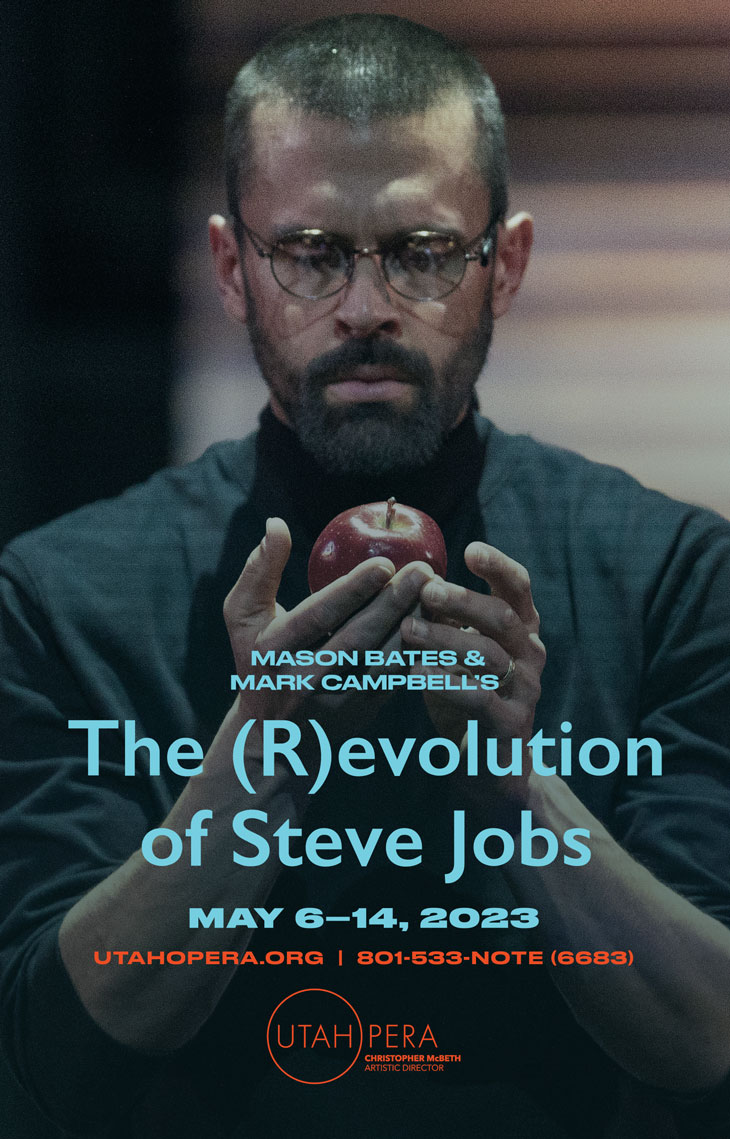Utah Symphony
History of the Music
History of the Music

By Jeff Counts
Ciel d’hiver (Winter Sky)
Duration: 10 minutes.
THE COMPOSER – KAIJA SAARIAHO (b. 1952) – In addition to a robust and ongoing literary tradition (with a not insignificant emphasis on noirish fiction), the countries that make up Scandinavia continue to produce important classical musicians at a rate that rivals any other part of the world. Conductors and composers are a primary export, and Finland does more than its share. Born in Helsinki and trained at the Sibelius Academy, Kaija Saariaho helped found the “Ears Open” group, a progressive collective of like-minded Finns dedicated to experimentation and freedom from the hide-bound expectations of previous generations. She later entered the IRCAM Research Institute in Paris and there learned many of the electronic techniques that inform her acoustic orchestra writing.
THE HISTORY – Saariaho composed Orion, a suite for very large orchestra, in 2002. In Peter Laki’s program note for the Cleveland Orchestra premiere, he confirmed that “Images of night, dreams, myths, and distant memories have always loomed large in Kaija Saariaho’s work.” The myth, in this case, concerns the mortal son of the sea-lord Poseidon. Orion, a giant who could walk on water and wielded an unbreakable bronze club, was among antiquity’s greatest hunters. He was rewarded in death by Zeus with a place among the stars and the three lights that make up his belt are highly recognizable to even the most casual observer of constellations. As with the celestial belt, Saariaho’s Orion comprises three movements. Appropriately, the first (“Memento mori”) depicts what Laki describes as an “amorphous interstellar space,” while the third (“Hunter”) runs down its prey in a fleet but increasingly uncertain rush. It is from the second movement (“Winter Sky”) that Ciel d’hiver is derived. Saariaho excerpted it for a commission by Musique Nouvelle en Liberté in 2013 and took the opportunity to re-arrange the score for a more conventional orchestra complement. The choice to strip down the forces required to perform Ciel d’hiver have given it new life on concert stages around the world, but almost nothing was lost in the translation. Sound is more than volume, color, and texture for Saariaho. It also contains density, temperature, and liquidity, and this new version of “Winter Sky,” though less expansive, brims with just as much sonic innovation as the original. This is not music of comic observation. No, this is music of cosmic habitation, as if for ten brief minutes the orchestra itself has left the Earth to sample what passes for life in the firmament. In the unpredictable soundscape of Kaija Saariaho’s “open ears,” we learn that it is cold up there. It is lonely. And it is ancient beyond counting.
THE WORLD – Elsewhere in 2013, the Boston Marathon bombings occurred, India launched a Mars Orbiter, a powerful meteor explosion near Chelyabinsk in Russia injured 1500 people, and Lance Armstrong finally admitted to doping in all seven of his Tour de France victories.
THE CONNECTION – These performances represent the Utah Symphony premiere of Saariaho’s Ciel d’hiver.
Concerto for Violin
Duration: 35 minutes in three movements.
THE COMPOSER – ARAM KHACHATURIAN (1903 –1978) – Born to Armenian parents in the Georgian capital of Tbilisi, Khachaturian was, right from the start, a man of many cultures in the expanding Russian, and later Soviet, sphere of influence. He was surrounded by Armenian, Azerbaijani, and Georgian folk traditions as a child (the “joyous and sad events in the life of the people always accompanied by music”) but did not study music until he moved to Moscow (without knowing how to speak Russian) at 18 to pursue a degree in biology. He found the cello instead and, once he learned how to read music, he could not be talked out of writing it.
THE HISTORY – Unlike a few of his perhaps more famous colleagues who bristled under Soviet supervision in the 1940s, Khachaturian always played the part of the dutiful model Party Man. Even so, he was censured in 1948 with Prokofiev, Shostakovich, and others for writing music that was too advanced for the masses (labeled “formalism” in that it lacked easily perceived extramusical contexts for the common listener). He quickly issued a public apology for his failings and the contrition definitely helped his cause. The effusive score he supplied for a Lenin biopic later in the year didn’t hurt either, so Khachaturian was soon back in good graces. Interestingly, his music changed very little after reinstatement. His scores were as lush, entertaining and multi-lingual as ever, which proves that his inclusion in the 1948 sweep was due to his status as president of the Composers Union, an institution constantly in the crosshairs of the Party censors. Previous to all of this political fuss, however, was the Violin Concerto. Written over the course of two months in 1940 for the venerable virtuoso David Oistrakh, Khachaturian was riding a “wave of happiness” in anticipation of the birth of his son. He poured this “love of life” into the music, as he always did, and the dance-y, folky idioms he favored throughout his career here project his emotional generosity with ease. Oistrakh first played through the solo part at Khachaturian’s cottage for a summer audience of fellow musicians and well-wishers. According to the composer, his muse “played as if he had been practicing it for months, when in fact it was only a few days…” Many years after the premiere, Oistrakh crafted his own cadenza to replace the one Khachaturian originally fashioned, an act the ever-agreeable composer saw as proof of his soloist’s continued support. “It is an honor for me,” Khachaturian wrote, no doubt with a smile, “to have provoked your creative imagination.”
THE WORLD – Elsewhere in 1940, Mount Vesuvius erupted, the “Great Escape” from Stalag Luft III occured, the United Negro College Fund was founded in America, and Iceland issued its final declaration of independence from Denmark.
THE CONNECTION – The rarely performed Violin Concerto of Khachaturian has not been heard on a Utah Symphony concert since 2008. Michael Christie conducted and Karen Gomyo was soloist.
Concerto for Orchestra
Duration: 36 minutes in five movements (with pauses).
THE COMPOSER – BÉLA BARTÓK (1881–1945) – With the situation in Europe worsening by the day, Béla Bartók sent many of his most important scores abroad and then reluctantly immigrated to the United States in 1940. As an outspoken critic of fascism, the slack in his perceived circle of safety had disappeared as Hungary’s nationalistic government attempted to silence him. Once settled in New York, Bartók began to suffer the first symptoms of his long undiagnosed leukemia that would take him so quickly. He never was fully at home in America (he felt just as underappreciated there as he had in Hungary), but it would be here that he received the 1943 commission that would forever define his place as a 20th century titan.
THE HISTORY – The new work, a Concerto for Orchestra (commissioned by Serge Koussevitzky in memory of his recently deceased wife Natalie), premiered in Boston the following season and would become Bartók’s most popular and important masterpiece. Sadly, it was one of the last pieces he would complete before succumbing to his illness in 1945. In the end, it was a monument not just to Natalie Koussevitzky, but to himself, and it is a pity Bartók never experienced the Concerto’s ascendance to the first rank of 20th century compositions. He didn’t necessarily break new ground with his version of the non-symphony since Hindemith and Kodály had each already written a Concerto for Orchestra in the previous two decades. It was Bartók, however, who brought a level of perfection to the form and whose masterwork still serves as its finest example. The piece is structured as a large palindrome and Bartók himself often spoke to his Concerto’s “tendency to treat the single instruments and instrument groups” in a “soloistic manner.” Indeed, the writing is highly virtuosic, and every section of orchestra is featured expertly at a time when American orchestral talent was burgeoning under the leadership of many imposing European maestros. “The general mood of the work represents,” he wrote in a brief program note for the premiere, “apart from the jesting second movement, a gradual transition from the sternness of the first movement and the lugubrious death-song of the third, to the life-assertion of the last one…” With all the Bartók hallmarks on display—the depthless well of melodic ingenuity, the rhythmic vitality, the formal creativity, the scathing wit (refer here to the “jesting” Bartók mentions in his note and the Shostakovich parody that “interrupts” the Intermezzo movement)—this is the work of a genius who was in total, effortless possession of his skills. Not one note is out of place.
THE WORLD – Elsewhere in 1944, Operation Overlord, code named D-Day, commences with the landing of 155,000 Allied troops on the beaches of Normandy in France. Paris is liberated from Nazi occupation. Allied troops attempt the largest airborne military operation with Operation Market Garden and Mahatma Gandhi is released from jail.
THE CONNECTION – The Concerto for Orchestra has been a favorite of Music Directors and Guest Conductors alike at Abravanel Hall. Maestro Ilan Volkov conducted it most recently in 2014.
